
Fayum mummy portraits - ritual painting that preceded its time
Fayum mummy portraits is one of the significant discoveries by researchers of architectural monuments of Ancient Egypt. The Fayum mummy portraits is an image of the deceased executed on a wooden board. Archaeologists have found these portrait tablets on mummies of Greek immigrants who lived in Egypt during the 1st to 3rd centuries CE. Researchers highly appreciate the artistic and historical value of these ancient masters' creations. The paintings still captivate viewers with their emotional intensity and vibrant colors, which have been well-preserved in Egypt's climatic conditions.
 Fayum mummy portraits. Portrait of a woman named Isidora, 100-110 AD
Fayum mummy portraits. Portrait of a woman named Isidora, 100-110 AD
What is a Fayum mummy portraits
The Fayum mummy portraits is a distinct genre of painting practiced by ancient Greeks who migrated to Egypt after the country was conquered by Alexander the Great. Fayum, one of the oldest cities in world history, became a major center of Hellenic communities. The Greeks constituted a wealthy segment of the population, with most of the local residents engaged in trade, agriculture, and crafts. Over time, the Greek immigrants adopted certain Egyptian customs, including burial rituals.
 Fayum mummy portraits. A man called Heraclides, 50-100 AD
Fayum mummy portraits. A man called Heraclides, 50-100 AD
The Fayum mummy portraits emerged in the second half of the 1st century when the Greeks began to mummify the deceased. Instead of the traditional Egyptian mask, they inserted a wooden board with a realistic depiction of the deceased's face and then covered the edges of the painting with bandages. Sometimes the paintings were directly applied to the burial shroud, depicting the deceased in the guise of the god of the afterlife, Osiris.
 Fayum mummy portraits. The mummy of a man named Antinoi, 125-150 AD
Fayum mummy portraits. The mummy of a man named Antinoi, 125-150 AD
Historians can infer information about the appearance, hairstyles, and attire of people from that era based on the paintings found in necropolises. The Greek elite followed Roman fashion trends, which helps in more accurately dating these art artifacts. In tombs, mummies of children and young adults were often discovered, indicating a relatively short lifespan during the early first millennium. The profession of the deceased was not inscribed on the shrouds, but researchers believe that the portraits belonged to prominent military commanders, state and religious officials, wealthy entrepreneurs, and members of their families.
 Fayum mummy portraits. A boy called Eutychius
Fayum mummy portraits. A boy called Eutychius
For a long time, art historians believed that these paintings were created during the lifetime of the deceased and hung in the atriums until their death, following the Hellenistic custom. Most of the portraits depict individuals aged between 20 and 40, and archaeologists have found traces of suspension on several specimens. However, more recent research has proposed the hypothesis that artists fulfilled orders even after death, as the age depicted in the portrait often corresponds to the mummified remains. Discussions on this topic continue within the scientific community.
 Fayum mummy portraits. The woman in the purple chiton
Fayum mummy portraits. The woman in the purple chiton
Features and Characteristics of Fayum mummy portraits
The portraits found in tombs can be divided into two major groups. The early paintings were executed using encaustic, while in later periods, wax and glue tempera became more common. The paintings were based on boards made of durable woods such as yew, cedar, plane tree, and cypress. Sometimes the surface was covered with fabric and a ground layer was applied on top. Encaustic or painting with melted beeswax was prevalent among the ancient Greeks. The background and clothing were painted with broad brushstrokes, while the face, hair, and fine details were refined using a metal tool.
Characteristic features of Fayum mummy portraits include:
- Realistic depiction.
- Bright, vibrant tones.
- Filling the entire background, multilayered.
- Application of gold leaf.
- Attention to details such as adornments, clothing, and hairstyles.
 Fayum mummy portraits. A woman from Hawara, 75-100 AD
Fayum mummy portraits. A woman from Hawara, 75-100 AD
The backgrounds of the paintings were always monochromatic, using shades of brown or gray. The works differ in terms of artistic style but share similarities in technique. Presumably, the initial paintings were created by Greek artists, and then local students joined them, which is why some works exhibit Egyptian influences. The left side of the face is usually shaded, giving the image a graphic quality. Men and women are depicted wearing tunics, with himatia, pieces of fabric, draped over them.
 Fayum mummy portraits. A woman who lived during the reign of the Roman Emperor Trajan, 98-117 AD
Fayum mummy portraits. A woman who lived during the reign of the Roman Emperor Trajan, 98-117 AD
In the early examples, artists paid great attention to the rendering of clothing and adornments, while in later works, the depictions became more schematic. Ritualistic painting began to decline by the end of the 3rd century CE, with faces losing their volume and the technique becoming significantly simplified. Funerary portraits eventually disappeared from common use with the widespread adoption of Christianity and a diminished interest in ancient religious rituals.
 Fayum mummy portraits. A woman from Fayoum, 300-325 AD
Fayum mummy portraits. A woman from Fayoum, 300-325 AD
The Discovery of Fayum mummy portraits
The discovery of Fayum mummy portraits in the 19th century caused a sensation. Prior to that time, encaustic paintings were largely unknown. There were occasional mentions of ritual portraits in the works of ancient authors, but only a limited circle of scholars were aware of them. The discovery was made by residents of the Fayum Oasis in 1887 during a search of partially plundered tombs. When the portraits appeared on the antiquities market in Cairo, many collectors believed them to be forgeries due to the remarkably well-preserved colors.
 Fayum mummy portraits. Man with beard, 1st century AD
Fayum mummy portraits. Man with beard, 1st century AD
The first batch of found portraits was acquired by an Austrian named Theodor Graf. As a collector with extensive knowledge of ancient Egyptian art, he immediately recognized the monumental significance of the discovery. After arriving in Vienna, he entrusted the paintings to Dr. Georg Moritz Ebers, one of the esteemed German Egyptologists. In 1888, the scholar published an article about the portraits, and the first exhibitions took place in Berlin, Stuttgart, and Munich. Over the following years, the exhibition traveled to all European countries and even visited the United States.
 Fayum mummy portraits. Woman in orange chiton with ringlet hair
Fayum mummy portraits. Woman in orange chiton with ringlet hair
Meanwhile, excavations continued in Egypt. Between 1887 and 1910, the English archaeologist Flinders Petrie discovered about 150 works from various periods. The British archaeological expedition primarily worked in the region of the Fayum Oasis, but the paintings were also found in the vicinity of Memphis, Akhmim, Faiyum, and other Egyptian cities. Today, around 900 works have been found, housed in museums and private collections.
 Fayum mummy portraits. Exhibition of Fayum portraits at the Pushkin Museum of Fine Arts
Fayum mummy portraits. Exhibition of Fayum portraits at the Pushkin Museum of Fine Arts
The Fayum mummy portraits became a unique phenomenon in world culture. Ancient artists conveyed emotions such as fatigue, exhaustion, sadness, or joy through contours and lines, while broad strokes and improvisational techniques helped them capture the characters' inner states. The techniques of the Fayum masters were ahead of their time, which is why their works are often compared to the creations of Impressionists. In Russia, the largest collections of portraits are presented in the State Hermitage Museum and the Pushkin Museum of Fine Arts.
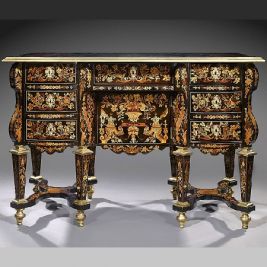 Marquetry is the elegant ancient art of inlaying veneer
Marquetry is the elegant ancient art of inlaying veneer  Digital and Interactive Art: Redefining User Experience in Contemporary Art
Digital and Interactive Art: Redefining User Experience in Contemporary Art 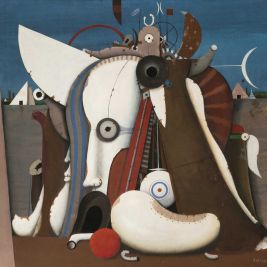 Experience the Grandeur at Wettmann Auktionshaus an der Ruhr's Art and Antique Auction
Experience the Grandeur at Wettmann Auktionshaus an der Ruhr's Art and Antique Auction 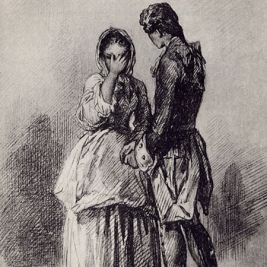 Illustration is a colorful and visually appealing drawing that complements the content of a book
Illustration is a colorful and visually appealing drawing that complements the content of a book  Photography is an art accessible to everyone
Photography is an art accessible to everyone 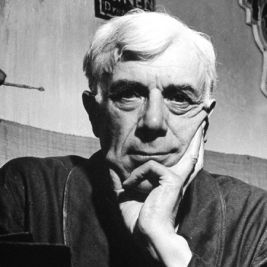 Georges Braque - the founder of Cubism in world art
Georges Braque - the founder of Cubism in world art 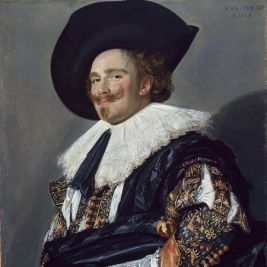 Portrait - a genre of painting: essence, types, history of the genre, famous portraits and portrait artists
Portrait - a genre of painting: essence, types, history of the genre, famous portraits and portrait artists  Bas-relief - a type of sculpture with an ancient and rich history
Bas-relief - a type of sculpture with an ancient and rich history 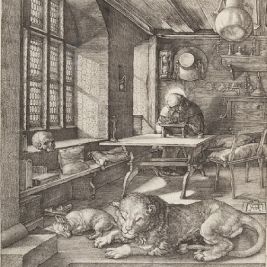 Engraving is a captivating art of creating printed images
Engraving is a captivating art of creating printed images 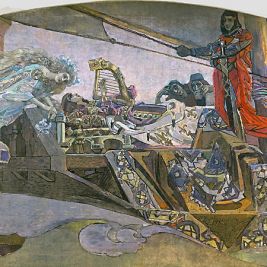 Modern - breakthrough or just a transitional period
Modern - breakthrough or just a transitional period